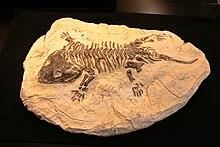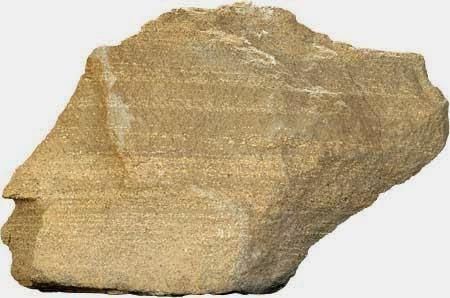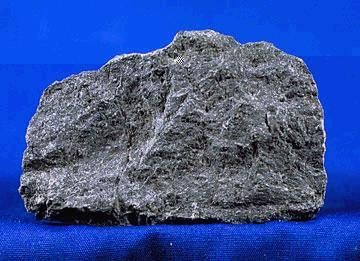Class 7 Geography Chapter 2 Question Answers - Inside Our Earth
Very Short Answer Questions
Q1: The upper crust is made up of minerals like silicon and aluminium while lower constitutes silicon and magnesium. (T/F)
Ans: True
Q2: Deccan plateau is made up of …………………rocks.
Ans: Basalt
Q3: Is the earth is a dynamic planet?
Ans: Yes
Q4: What temperature found at the core?
Ans: 5000 degree
Q5: The three layer of earth mantle is the thinnest among them.(T/F)
Ans: False
Q6: The inner most layer is the core with a radius of about __________ km.
Ans: 3500 km
Q7: Give an example of extrusive igneous rocks.
Ans: Basalt
Q8: The upper most layer of the earth surface is called the __________
Ans: Crust
Q9: The oceanic crust mainly consist of __________ and __________
Ans: Silica and Magnesium
Q10: Any natural mass of mineral matter that makes up the earth’s crust is called __________
Ans: Rock
Short Answer Questions
Q1: What are the uses of rocks?
Ans: Rocks are very useful to man, used for making roads, houses and building. Rocks are the source of precious metals like gold, silver, and platinum. We use stone in many games. For example, seven stone, top scotch, five stones
Q2: Define fossil.
Ans: The remains of dead plants and animal beneath the layer of rocks are called fossils.
 Fossil
Fossil
Q3: What is mantle?
Ans: It is an intermediate layer lies between the crust and the core of the earth .Its avg thickness is about 29,00 km. It is believed to consist of solid ultra basic rocks, rich in iron and magnesium.
Q4: What do you know about the core?
Ans: The innermost part of the earth is known as the core. The thickness of whole layer comprising the outer and the inner core is 4671 km. The outer core starts at the depth of 2900 km, rich in iron and nickel.
Q5: What is the importance of outer crust to us?
Ans: The solidified outer crust of the earth is of great importance to us .This thin crust just like the skin of an apple, forms the stage on which human life and civilization have developed. It has the valuable soil and gives us most of our minerals.
Q6: What is mineral?
Ans: A mineral is a naturally occurring substance having a definite chemical composition and physical properties.
 Sandstone
Sandstone
Q7: Give example of all the three major forms of rocks?
Ans: Igneous-granite, basalt
Metamorphic rocks- marble, slate, graphite
Sedimentary- limestone, sandstone.
Q8: What do you know about extrusive and intrusive rocks formed?
Ans: When the molten lava comes on earth’s surface; it rapidly cools down and become solid. Rocks formed in such a way on the crust are called Extrusive igneous rock. Sometimes molten magma cools down deep inside the earth crust, solid rocks so formed are called Intrusive igneous rocks.
 Basalt
Basalt
Q9: Define the following?
1. Igneous rocks
2. Sedimentary rocks
3. Metamorphic rocks
Ans:
- Igneous rocks: Igneous rocks are formed by the solidification of hot and molten magma, also termed as primary rocks or the parent rocks.
- Sedimentary rocks: Sedimentary rocks are formed the sediments, particles, grains or fragments derived from existing primary rocks. These sediments are soft but in course of time they become hard and compact.
- Metamorphic rocks: Because of tremendous pressure and high temperature both igneous and sedimentary rocks may be altered so greatly in appearance and composition that they entirely lose their original character. They are termed as metamorphic rocks
Q10: What is the source of knowing of the layered structure of the earth?
Ans: The layered structure of the earth has been known on the basis of variation in temperature, pressure and the density of the material in the interior. The behaviour in the earth quake shock waves travelling from the centre of their origin in all directions has been much helpful to this end.
Long Answer Questions
Q1: How are minerals useful to mankind?
Ans: Minerals are useful to humankind in the following ways:
- Some are used as fuels. For example, coal, natural gas and petroleum.
- They are also used in industries – iron, aluminium, gold, uranium, etc, in medicine, in fertilisers, etc.
Q2: What are the uses of rocks?
Ans: Uses of rocks
- The hard rocks are used for making roads, houses and buildings.
- Stones are used in many games. For example, seven stones (pitthoo), hopscotch (stapu/kit kit), five stones (gitti).
Q3: How are extrusive and intrusive rocks formed?
Ans: Extrusive rock- When molten lava comes on the earth’s surface, it rapidly cools down and becomes solid. Rocks formed in such a way on the crust are called extrusive igneous rocks. They have a very fine grained structure.
Intrusive rocks – Sometimes the molten magma cools down deep inside the earth’s crust. Solid rocks so formed are called intrusive igneous.
Q4: Differentiate between sial and sima.
Ans: 
Q5: What do you know about earth’s interior?
Ans: The earth is made up of several concentric layers with one inside another.
Crust – The uppermost layer over the earth’s surface is called the crust. It is the thinnest of all the layers. It is about 35 km. on the continental masses and only 5 km. on the ocean floors.
Mantle – Just beneath the crust is the mantle which extends up to a depth of 2900 km. below the crust.
Core – The innermost layer is the core with a radius of about 3500 km. It is mainly made up of nickel and iron and is called nife. The central core has very high temperature and pressure.
|
63 videos|554 docs|46 tests
|
FAQs on Class 7 Geography Chapter 2 Question Answers - Inside Our Earth
| 1. What are the three main layers of the Earth? |  |
| 2. How do scientists study the Earth's interior? |  |
| 3. What is the difference between the lithosphere and asthenosphere? |  |
| 4. How do convection currents in the mantle contribute to plate tectonics? |  |
| 5. What is the significance of the Earth's magnetic field? |  |






















